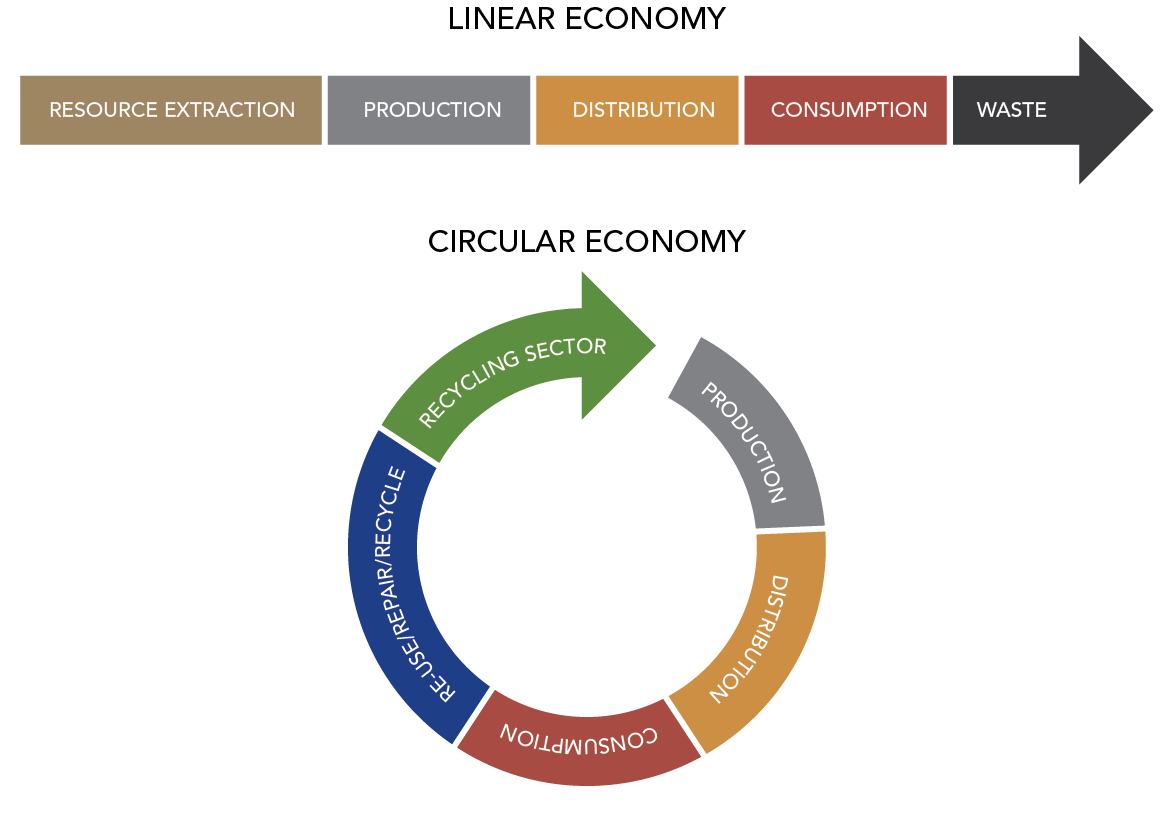Can the circular economy transform the world’s number one consumer of raw materials?

A labourer builds components of wind turbines at a wind power equipment factory. Image: REUTERS/China Daily
The construction industry’s appetite for raw materials is vast; it is the world’s largest consumer of them and accounts for 25-40% of global carbon emissions.
Yet very little gets reused or recycled. The World Economic Forum’s new report Shaping the Future of Construction found that only a fraction of construction waste gets recycled. Instead, billions of tonnes of materials that could be used elsewhere are being dumped.
With urban areas growing in population by 200,000 people per day, construction is going to continue to have a significant impact on the way the world’s resources are used. But how do we change the way the industry deals with waste?
A missed opportunity
The World Economic Forum report found that less than a third of all construction and demolition waste is recovered and reused.
That’s despite the fact that these materials could be put to a number of uses. From road-building to flooring, so much of what is currently being discarded could be re-purposed and recycled.
Construction and Demolition Waste

Building a new model
The Shaping the Future of Construction report highlights the huge benefits that can come from change in the construction industry.
The industry consumes about 50% of global steel production and, each year, 3 billion tonnes of raw materials are used to manufacture building products worldwide.
In the United States, about 40% of solid waste derives from construction and demolition.
Such waste involves a significant loss of valuable minerals, metals and organic materials. With such quantities involved, even small improvements in the way the construction industry works will have significant impacts on sustainability.
By focusing on reusing and recycling materials, the industry could see huge efficiency gains.
The circular economy
The traditional linear economy uses a "take, make, dispose" economic model which relies on large quantities of cheap, easily accessible materials and energy. It is not a sustainable model and many believe it is a now reaching its limits.
A circular economy aims to be a viable alternative that reuses where possible and designs products that can be "made to be made again" while powering the system with renewable energy.

Applying this principle to the construction industry could bring extremely cost-effective benefits. The World Economic Forum’s report points out that by harnessing the capacity of the building sector, many countries could cut emission rates cost effectively and achieve energy savings of more than 30%, according to the United Nations Environment Programme.
The target set by the United Kingdom’s construction industry for 2025 is a full 50% reduction of today’s level of greenhouse gas emissions in the overall built environment.
Circular Economy Principles in the Construction Value Chain

The World Economic Forum’s report shows that by adopting circular economy principles and sharing knowledge within the industry, companies can bring about transformative change. With the help of government – both as regulator and infrastructure customer – this change can be supported and encouraged.
Small changes in such a vast industry have extraordinary potential and many of these changes are already within reach. All that is missing is the will to bring about the necessary transformation.
Don't miss any update on this topic
Create a free account and access your personalized content collection with our latest publications and analyses.
License and Republishing
World Economic Forum articles may be republished in accordance with the Creative Commons Attribution-NonCommercial-NoDerivatives 4.0 International Public License, and in accordance with our Terms of Use.
The views expressed in this article are those of the author alone and not the World Economic Forum.
Stay up to date:
Circular Economy
Forum Stories newsletter
Bringing you weekly curated insights and analysis on the global issues that matter.
More on Circular EconomySee all
Felipe Basso
November 13, 2025







